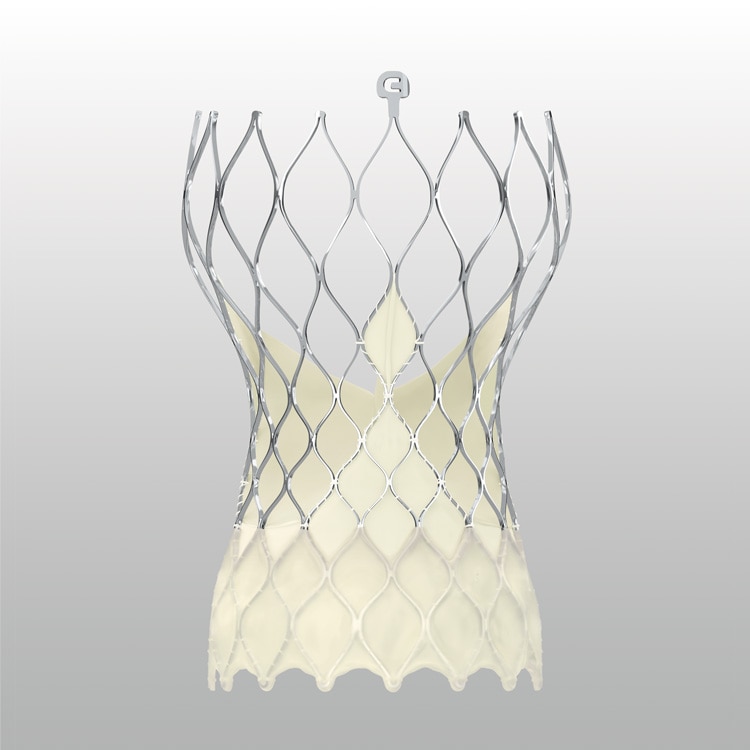Indications, safety warnings Indications, Safety, and Warnings
ETIOLOGY OF CALCIFIC AORTIC STENOSIS
The mechanism of calcific aortic stenosis is similar to atherosclerosis.1
A healthy aortic valve functions properly, opening and closing without being impeded by calcium deposits.

The performance of a stenotic aortic valve is impeded by calcium deposits on the leaflets.

AORTIC STENOSIS PREVALENCE
Aortic stenosis is predominantly a degenerative disease relative to other types of heart valve disease such as aortic regurgitation, mitral stenosis, and mitral regurgitation.1
Approximately 300,000 people in the U.S. are diagnosed annually with symptomatic severe aortic stenosis.2 Aortic stenosis is the most prevalent native valve disease.3
ONSET OF SEVERE AORTIC STENOSIS

Onset of dyspnea and other heart failure symptoms foretell the worst outlook for aortic stenosis patients.4 Classic symptoms of aortic stenosis include angina, syncope, and heart failure. After becoming symptomatic with signs of heart failure, the average patient survival is two years without treatment.4
INDICATION FOR INTERVENTION
Indication for intervention in patients with valvular heart disease is dependent on:5
- The presence or absence of symptoms
- The severity of valvular heart disease
- The response of the left and/or right ventricle to the volume or pressure overload caused by valvular heart disease
- The effect on the pulmonary or systemic circulation
- A change in heart rhythm
The Heart Valve Team

According to the AHA/ACC guidelines,5 physicians should nearly always consider intervention for otherwise healthy patients with severe valvular heart disease who become symptomatic. Further, the AHA/ACC Class I Recommendation provides that patients with severe valvular heart disease should be evaluated by a multidisciplinary heart valve team when intervention is considered.

POSSIBLE TREATMENT OPTIONS FOR PATIENTS DIAGNOSED WITH AORTIC STENOSIS
Your patient’s situation will guide your treatment. Options include:
- Transcatheter aortic valve implantation (TAVI), a less invasive alternative to surgical implantation
- Surgical aortic valve implantation to remove the damaged valve and replace it with an artificial valve
- Balloon valvuloplasty (BAV) for temporary relief
- Medication to ease some of the symptoms of severe aortic stenosis
Mohler, EH, et al. Development and Progression of Aortic Valve Stenosis: Atherosclerosis Risk Factors-a Causal Relationship? A Clinical Morphologic Study, Clin Cardiol.1991;14:995999.
Medtronic data on file.
lung B. A prospective survey of patients with valvular heart disease in Europe: The Euro Heart Survey on Valvular Heart Disease. Eur Heart J. 2003;24:1231-1243.
Lester SJ, Heilbron B, Gin K, et al. The natural history and rate of progression of aortic stenosis. Chest 1998; 113:1109-14.
Nishimura RA, et al. Circulation. 2014;129:2440-2492; Nishimura RA, et al. Circulation. 2017;135:e1159-e1195.

